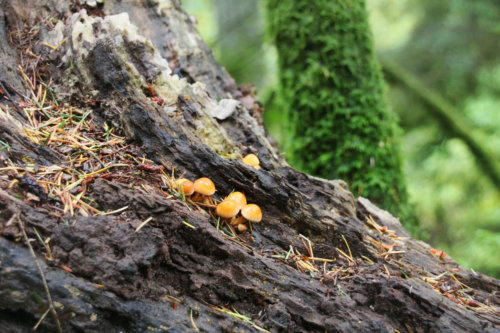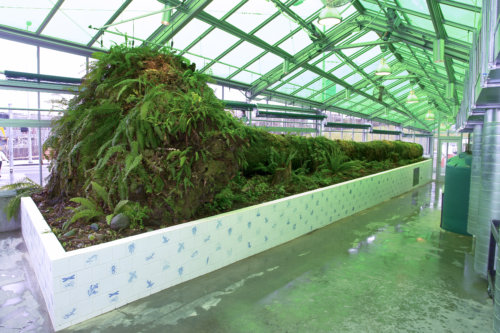
Understanding The Magic of Nurse Logs
If you’ve stepped foot in the forested wilds of the Pacific Northwest, you’ve seen the moss and fern covered “nurse logs” of fallen Sitka spruce, hemlock, cedar and Douglas fir. While we might never know if a falling tree in a forest makes a sound if no one is there to hear it, there is no doubt that fallen trees provide seedlings with just the right ingredients they need to survive in the dark, intensely-competitive undergrowth of a temperate rainforest. Miraculously, the life they live (up to 500 years for some trees) often matches the time it takes for them to fully decompose back to the soil. This often equates to a millennium of sustaining life in some form or another.
One look at a mature nurse log and a fascinating fact becomes obvious—these dead and fallen trees are teeming with far more life inside them than they ever had when they were alive. Living trees are made up of about 5% living tissue, but when certain species die, they become literal garden beds of new life. These otherwise “dead” trees contain five times more living matter than when they were growing upright.
“These otherwise ‘dead’ trees contain five times more living matter than when they were growing upright.”
Temperate rain forests are areas with large amounts of rainfall that allow a lush wilderness to grow. Large trees grow high to capture sunlight, while shade-loving mosses, mushrooms and ferns cover the forest floors. Tree seedlings on the floor have a hard time finding the sunlight they need until a massive giant falls to create a crevice of sunlight in the darkness. The fallen trees begin to decay with the help of insects, microbes, and fungus that recycle the wood into a rich, spongy soil called humus. The log becomes a fresh, elevated bed of rich nutrients with ample sunlight and moisture retention to cradle the beginning growth of new trees and other seedlings.
As a child growing up in Seattle, I played on these crumbling giants, used the humus in mud soups and eagerly hunted decomposed tree stumps to find red huckleberries. Since 2007, the city has been home to a unique art installation called Neukom Vivarium, which gives visitors in an insider’s view into the fascinating process of nurse logs. Under a Sleeping Beauty-esque glass enclosure, a 150-year-old Western hemlock lays teeming with life in a special chamber made to mimic the unique environment of the forest. Scientifically-engineered green glass protects the growth from harmful wavelengths that are not filtered out in the city. Moist air and water is pumped in through a visible system of pipes and mechanical devices. Microscopes and magnifying glasses allow guests to examine the process of decomposition and growth. Porcelain tiles lining the bed of soil illustrate the various living elements you might see: evergreen violets, banana slugs, fungi, lung liverwort, western sword fern, folding door spiders and red centipedes, among so many others.
Mark Dion is the artist and brainchild of this hybrid of sculpture, laboratory, architecture, environmental education and science display. In his first permanent public artwork in the United States, Dion has exposed a complex natural system to be seen up close and overtime. His hope is that visitors will view the Vivarium at different points in their lives to watch the complete ecosystem grow and change, as no visit will showcase quite the same display of creatures, organisms and processes at work, here in the middle of a city, just as it is in a forest.
Neukom Vivarium is housed in a 180 foot-long greenhouse at Seattle’s waterfront Olympic Sculpture Park, a part of the Seattle Art Museum. The display is on view when staff is available. Be sure to call ahead of a planned visit.




































